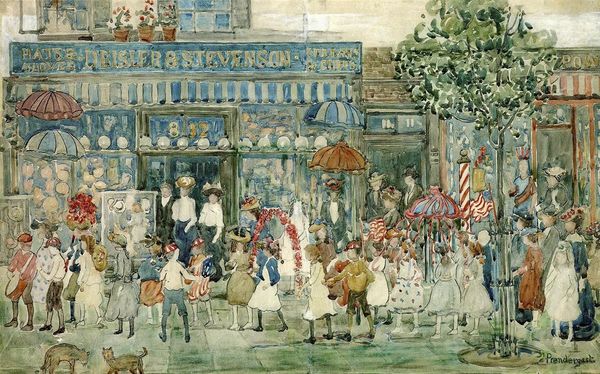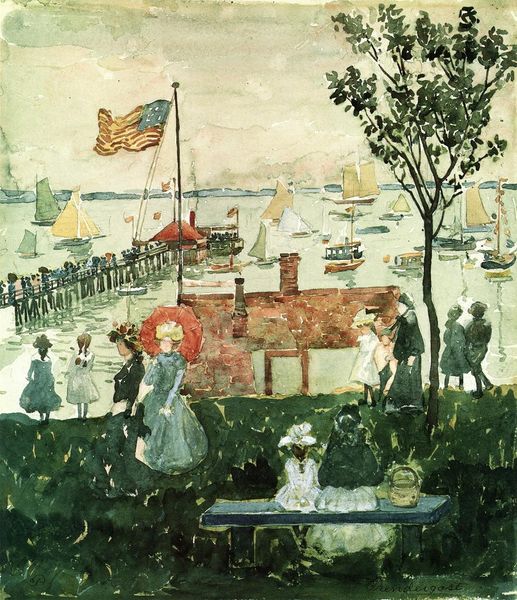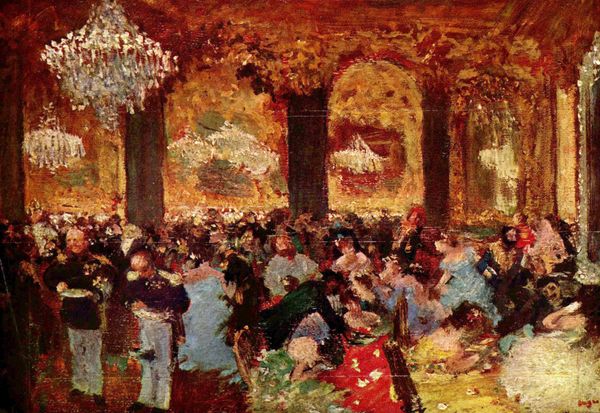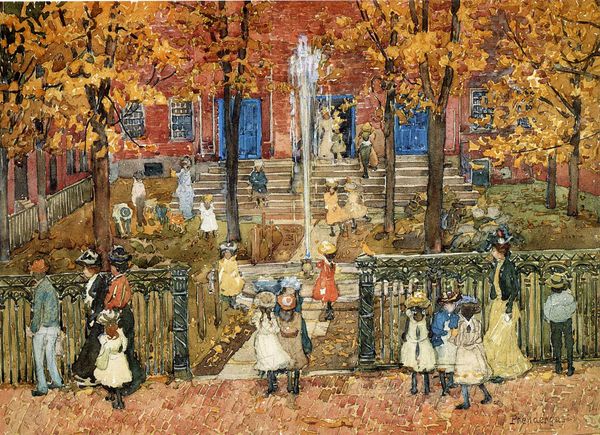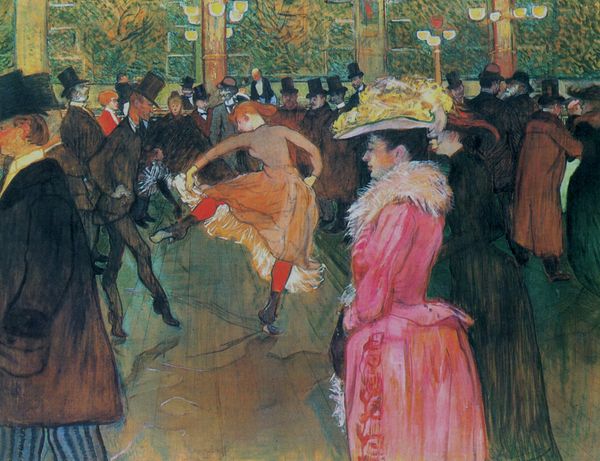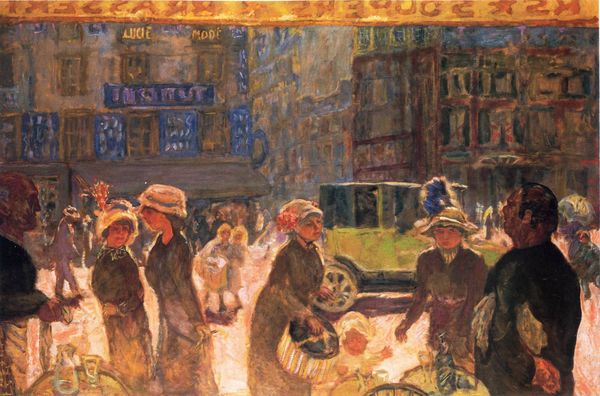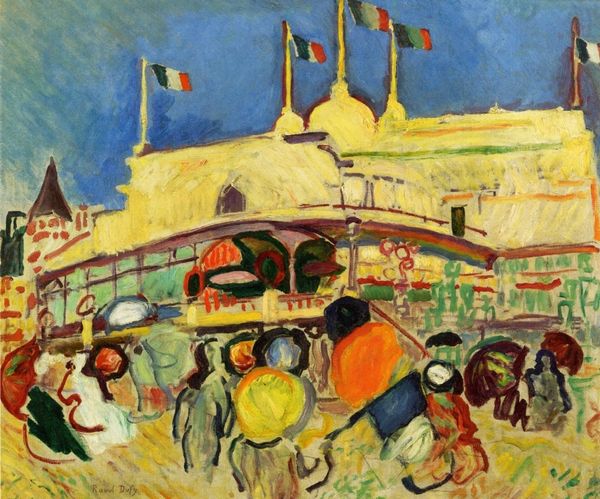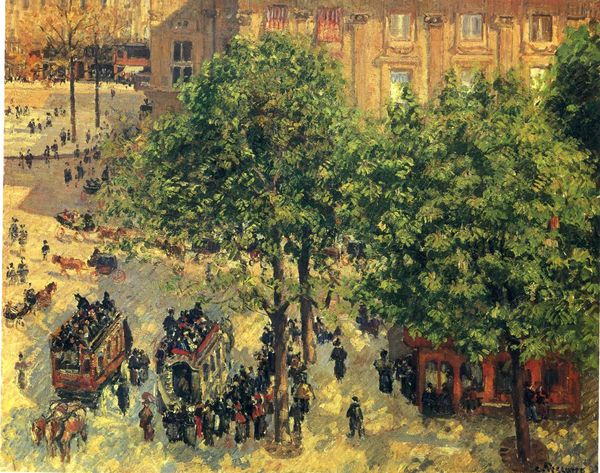
Dimensions: 38.1 x 41.91 cm
Copyright: Public domain
Editor: Here we have Maurice Prendergast’s "Madison Square," painted around 1901, using watercolor and graphite. It has a light, airy feel but with a densely packed composition. What stands out to you most about it? Curator: Immediately, the fractured brushwork captivates me. Notice how Prendergast renders form through distinct touches of color, a mosaic-like application of pigment. He isn't interested in linear precision, but rather in capturing the sensation of light and atmosphere through the interaction of hues. Editor: It almost looks unfinished in parts, like a sketch. Curator: Precisely. This immediacy is key. Consider how the architectural elements in the background are suggested rather than defined, achieved by layered translucent washes. The artist directs our focus to the foreground figures through subtly intensified coloration. Are you able to perceive how that works to activate the surface? Editor: I see what you mean; it’s like the figures are popping out, but not in a three-dimensional way. How do you view the impact of that material handling here? Curator: The choice of watercolor reinforces the ephemeral quality of the scene. Unlike oil, watercolor resists blending. So each brushstroke is visible and this transparency imbues the artwork with an impression of lightness and spontaneity, essential components of its pictorial structure. This inherent flatness directs focus towards the intricate interplay of colors, where the eye continually finds pleasure as forms shift and blend with one another. Editor: It's fascinating how much can be understood through formal analysis alone. I appreciate how the medium influences the perception. Curator: Indeed. And by studying formal components, we unveil how Prendergast communicates his unique perspective.
Comments
No comments
Be the first to comment and join the conversation on the ultimate creative platform.
